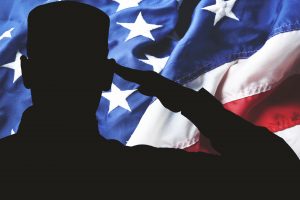Teaching professionals to respect the differences in others in order to optimize the efforts of everyone and maximize results is, in a nutshell, what I do for a living. My clients come from differing industries, business structures and revenue levels, but when it comes to eliminating barriers between employees they all recognize the need to bridge the gap between all four generations in today’s workforce. For most companies the math is simple and the potential harvest is vast and that’s why they are investing in generational training that positions them to leverage the over 100 years of combined expertise available in today’s multigenerational workforce.
To a large extent, barriers between employees lie in the very DNA of each generation who, by cultural design, view the world and the workplace through vastly differing lenses. While generational frustration from conflicting workplace expectations is evident, it doesn’t have to be the final outcome. When employees understand the key influencers of each generation, realize how cultural beliefs manifest themselves in the workplace, and learn how to interact with awareness and respect, the unique contribution of every generation is realized and results are maximized to the benefit of everyone. Here’s how it works.
Key Influencers
Dictionary.com defines generation as “a group of individuals, most of whom are the same approximate age, having similar ideas, problems, attitudes, etc.” While the definition is clear, concise, and simple the result in today’s workplace can be rather complex. As stated above, similar ideas, problems, and attitudes are the result of a unique set of influencers that manifest themselves in behaviors and expectations and that’s where the generations collide. The unique characteristics of each generation, while totally justified, unwittingly create conflict in the workplace. For example, while the key influencers for Baby Boomers include Civil Rights and the Vietnam War, Millennials were influenced by rapid advances in technology and digital media; very different influencers resulting in very different beliefs and behaviors. By understanding the significant events that influenced each generation, we can begin to accept the vast differences in their shared characteristics and respond more effectively to resulting workplace behaviors. Knowledge is the starting point for those who want to eliminate the conflict. From Traditionalists to Millennials, the first step to respecting our peers and colleagues is understanding what makes them unique.
Workplace View
Brick and mortar give physical shape to our workplace, but the culture on the inside creates the experience that draws or repels talent. With shared values, perspectives, and goals as the underpinning, company culture is created by practices and policies relative to such things as work ethic, physical environment, views of authority, and communication style. Shared characteristics foster alignment on employee practices, which is where generational differences create a problem. Case in point, just as WWII and Korea developed strict respect for authority and a company first attitude in Traditionalists, Watergate and high divorce rates resulted in skepticism for authority and intense self-reliance in Gen Xers. Simply put, the practices and policies that create the perfect environment for the older generations are not well-aligned to meet the needs of Gen Xers and result in retention issues with Millennials. By bringing awareness to the practices that create conflict, employees (and companies) are equipped with actionable knowledge to bridge expectations and reduce generational conflict.
Practical Application
Now we’re down to the so what and this is where the generational knowledge and awareness discussed above is put into action. It’s also where a two-way street is most effective. With knowledge comes responsibility, and excellence results from consistent application. The ability to anticipate conflict and manage interactions to the benefit of everyone is an appropriate skill for every employee regardless of position or title. By recognizing and accepting generational differences, employees will know when to text and when to call a face to face meeting. Communication styles and venues will vary to respect the intended recipient shifting from complete, grammatically correct sentences for Traditionalists to streaming bits of information devoid of punctuation for Millennials. As respect increases, barriers will be dissolved and employee contributions will combine to maximize results.
As long as there have been generations, there have been generation gaps. The conflict isn’t new, but four generations with vastly conflicting expectations in the workforce for the first time in history, has created a new generational challenge. Companies who choose to address the challenge with knowledge, awareness, and practical application of the same, are well positioned for success with the multigenerational workforce.
Abby Foster is the founder of Ahnimisha Consulting. Abby blogs at www.ahnimisha.com, and is a generational dynamics trainer, Human Capital consultant, and a certified Birkman© consultant. Abby delivers workshops, training seminars, individual coaching and consulting services, utilizing proven tools and techniques to help company’s maximize the efforts of every employee in today’s multigenerational workforce. Abby blogs at www.ahnimisha.com.
Contact Abby directly at [email protected]





